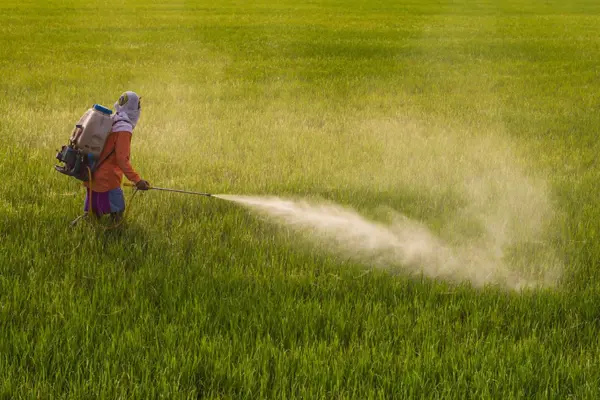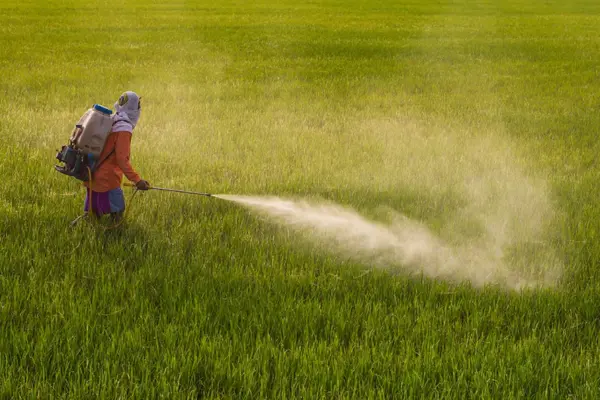When it comes to maintaining a healthy garden or landscape, understanding pest control terminology is essential. Many people recognize the importance of applying treatments, but the terms “pesticides” and “herbicides” can often lead to confusion. Knowing the difference between these two categories is crucial for effective and safe pest management.
So, what is the difference in petisides and herbicidesWhile they are related, they serve distinct purposes in the world of pest control.
In this article, we’ll explore these differences, delving into definitions, types, mechanisms of action, and safety considerations. Whether you’re a homeowner tackling a weed problem or a gardener managing pests, this guide will help clarify your options.
Understanding Pesticides

Definition of Pesticides
Pesticides are broadly defined as substances used to kill or control pests. These pests can include insects, weeds, fungi, and even rodents. The term “pesticide” encompasses a variety of products, each formulated to target specific organisms that pose a threat to health, property, or overall enjoyment of life.
For instance, common pests like mosquitoes can transmit diseases, while weeds can choke out desired plants in your garden. Therefore, understanding the different categories of pesticides is essential for effective pest control.
Types of Pesticides
Pesticides can be categorized into several types based on the specific pests they target:
Insecticides: These are designed specifically to eliminate insects. They can be further divided into:
Systemic Insecticides: Absorbed by plants and target insects that feed on them. Examples include imidacloprid and thiamethoxam.
Contact Insecticides: Kill insects on contact. Common examples are pyrethrins and malathion.
Rodenticides: Focused on controlling rodent populations, these substances are crucial for managing pests like mice and rats, which can carry diseases and cause property damage. They often contain anticoagulants that prevent blood clotting in rodents, leading to their demise. Key examples include bromadiolone and brodifacoum.
Herbicides: As a subcategory of pesticides, herbicides target unwanted plant life. They play a vital role in managing weeds, which can compete with desirable plants for nutrients, water, and sunlight.
Common Pesticide Use Cases
To better understand how pesticides function, consider these common scenarios:
Gardening: Homeowners often use insecticides to control aphids and other harmful insects that damage plants.
Agriculture: Farmers apply rodenticides to manage rodent populations that can threaten crop yields.
Landscaping: Herbicides help landscapers maintain attractive lawns by eliminating invasive weed species.
Conclusion of Pesticides Section
In summary, pesticides encompass a wide range of products aimed at controlling various pests. Understanding the different types of pesticides is the first step in choosing the right solution for your pest problems. Next, we’ll dive deeper into herbicides and explore how they fit into the broader category of pesticides.
Exploring Herbicides

Definition of Herbicides
Herbicides are specific types of pesticides designed to target unwanted plant life. While all herbicides fall under the broader category of pesticides, they serve a specialized function in weed management. Weeds can choke out desired plants, steal nutrients, and ruin the aesthetic appeal of gardens and landscapes.
Types of Herbicides
Herbicides can be classified based on their selectivity and timing of application:
Selective Herbicides: These target specific types of plants while leaving others unharmed. They are ideal for lawns where you want to eliminate weeds without damaging the grass. Examples include:
2,4-D: Commonly used against broadleaf weeds.
Dicamba: Effective on a range of broadleaf plants.
Non-Selective Herbicides: These kill all plant life they contact, making them suitable for areas where no vegetation is desired, such as sidewalks and driveways. Notable examples include glyphosate and paraquat.
Pre-emergent Herbicides: These work by preventing weed seeds from germinating. They create a barrier in the soil to stop seeds from growing into plants. Applications are typically made before the weeds emerge. Examples include pendimethalin and prodiamine.
Post-emergent Herbicides: These target weeds that have already sprouted and are visible. They work by affecting specific processes in the plant. Common options are glyphosate and fenoxaprop.
How Herbicides Work
The mechanisms of action for herbicides vary:
Inhibition of Photosynthesis: Some herbicides block the plant’s ability to photosynthesize, which is essential for energy production.
Growth Regulation: Others interfere with the plant’s growth hormones, preventing normal development.
Protein Synthesis Inhibition: Certain herbicides stop the production of proteins necessary for growth and survival.
Safety and Environmental Considerations
While herbicides are effective, they come with considerations regarding safety and environmental impact. Here are some important points to keep in mind:
Read Labels Carefully: Always follow the manufacturer’s instructions for application rates and safety precautions.
Protective Gear: Use gloves, masks, and protective eyewear to minimize exposure.
Impact on Non-target Plants: Be aware that non-selective herbicides can harm desired plants, so take care when applying.
Soil Health: Overuse of herbicides can lead to soil degradation. Consider integrating alternative methods like mulching or manual weed removal to maintain soil health.
Conclusion of Herbicides Section
Herbicides are vital tools in pest management, specifically targeting unwanted plant life. By understanding the different types and their mechanisms, you can make informed choices about weed control in your garden or landscape.
Common Misconceptions
Pesticides Only Target Insects
One widespread misconception is that pesticides are solely for controlling insects. In reality, the term encompasses a wide range of substances used against various pests, including weeds and rodents. This misunderstanding can lead to ineffective pest management strategies.
Herbicides are Safe for All Plants
Another common myth is that herbicides are safe to use around all plants. While selective herbicides are designed to target specific species, non-selective herbicides can damage or kill any plant they touch. It’s crucial to read labels and understand the product’s capabilities before application.
How Do They Work?
Mechanisms of Action
Pesticides and herbicides function through specific mechanisms tailored to their targets. Here’s a deeper look:
Insecticides: Many act by disrupting the insect’s nervous system, leading to paralysis or death. For example, neonicotinoids bind to nerve receptors, causing hyperactivity and eventual death.
Herbicides: As mentioned earlier, they can inhibit essential processes like photosynthesis or growth regulation. For instance, glyphosate blocks a pathway crucial for plant growth, effectively killing it.
Safety and Precautions
Understanding how these chemicals work is vital for safe application. Here are some safety tips:
Avoid Windy Days: Apply herbicides on calm days to prevent drift to non-target plants.
Store Properly: Keep all pesticides and herbicides in a cool, dry place, out of reach of children and pets.
Disposal: Follow local regulations for disposing of unused chemicals to minimize environmental impact.
Choosing the Right Product
Identifying Your Pest Problem
Before selecting a pesticide or herbicide, it’s essential to identify the specific problem you’re facing. Here’s a quick checklist:
Determine the Pest Type: Is it an insect, weed, or rodent?
Assess the Severity: How extensive is the infestation?
Consider Your Environment: Are there desirable plants nearby that could be affected?
Consulting Professionals
If you’re unsure about the best approach, consulting a pest control professional can save time and resources. They can provide tailored solutions based on your unique situation, ensuring the right products are used effectively.
Conclusion
In summary, understanding the difference between pesticides and herbicides is crucial for effective pest control. Each serves a specific purpose in managing unwanted organisms, from insects to weeds. By recognizing the various types and mechanisms of action, you can make informed choices that benefit your garden and the environment.
If you’re facing pest challenges, don’t hesitate to reach out to pest control experts who can help navigate your options safely and effectively.
Frequently Asked Questions (FAQs)
What is the main difference between herbicides and pesticides?
The main difference lies in their targets: pesticides encompass a broad range of substances aimed at controlling various pests, including insects, rodents, and weeds, while herbicides specifically target unwanted plant life.
Are herbicides harmful to pets?
Yes, certain herbicides can be harmful to pets if ingested or if they come into contact with treated areas. Always keep pets away from freshly treated lawns and gardens until it’s safe.
How can I safely use pesticides in my garden?
To use pesticides safely, always read the label, wear protective gear, and apply them on calm days to prevent drift. Ensure that you target the specific pest to minimize environmental impact.
What are some common examples of pesticides?
Common examples include:
Insecticides: Pyrethrins, malathion
Rodenticides: Bromadiolone, brodifacoum
Herbicides: Glyphosate, 2,4-D
When should I use herbicides versus pesticides?
Use herbicides when dealing with unwanted plant life and pesticides for controlling insects or rodents. Always identify the specific pest problem before selecting a product.

